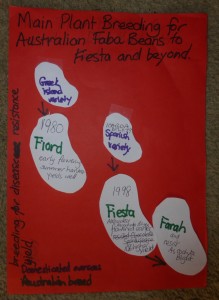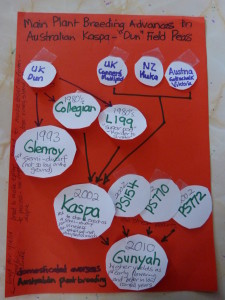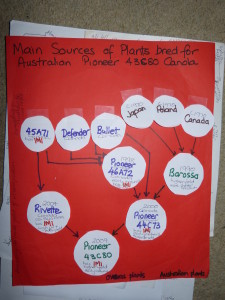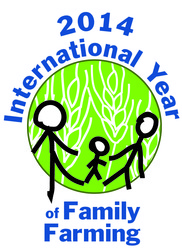Have you thought about what sorts of plants are chosen to grow your food? This page is about plant breeding, how it has changed over time and below some charts of the main steps in the breeding family histories of some cereals, legumes and an oilseed.
Plant breeding is an important branch of Science that has been continually improving our food plants for centuries. Their histories show a continual advance in nature of the Scientists (farmers, before specialists) and the methods they used to keep improving what can grow in local environments. In doing so they improve sustainability for the farmer and for the world which has benefitted from improvements in food supply:
- Observant people domesticated plants from the wild for foods and became farmers.
- Farmers, were the Scientists, for many centuries observing which plants grew best for their environment and choosing to keep their seeds for the next year’s crop- continually improving and adapting seeds to environments.
- It’s been just over a hundred years since a big effort was put into mixing varieties together to try to get improvements. At first farmers did this, then specialised plant breeders emerge in set-aside places eg Farrer near Canberra breeding many wheats of which Federation is most famous.
- This effort has become global since the 1970′s with the establishment of large seed banks, like ICARDA and CIMMYTA, for wild, and domesticated varieties of broad-acre crops.
- Even more recently with gene technololgy have given methods that make the selection of specific traits more targeted and quicker to develop new varieties to combat specific problems of disease, pests, salt and climate, and so continue to increase yields to feed more people on less land.
This page provides an introduction to some of the broad-acre crops that are grown on Wimmera-Mallee farms and their varied breeding history. The histories are quite complex and not easy to research, so I have compressed them into some ‘family tree’ diagrams below. Click on the diagrams to see a larger view. These show the major parents in their pedigrees, with notes on them to show:
- when varieties were released
- any great advance made
- country/region for external varieties , eg Wheats from USA in the 1800’s; pulses from the Middle East more recently.
- and the shape of the seeds represents their shape in reality
Cereals
Barleys:
feed (for animals) – Hindmarsh 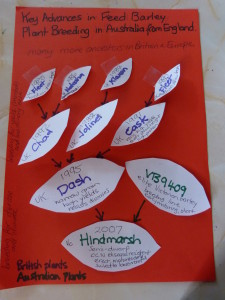
and malting (for beer) – Commander 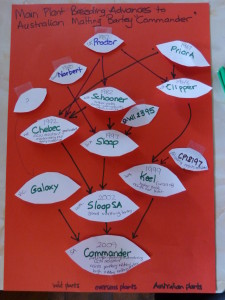 and Gairdner
and Gairdner 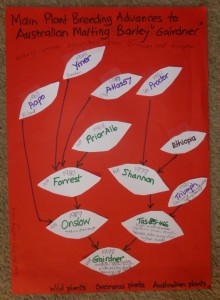
oats – feed (for animals) – Wintaroo and Mitaka oats .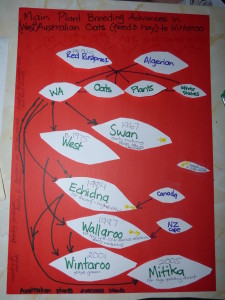
wheats; – Correll 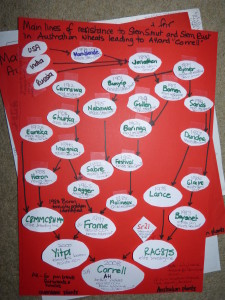 or to Kord CL Plus
or to Kord CL Plus 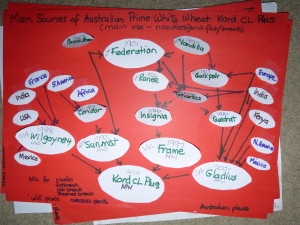
Legumes
chick peas, PBA Slashser desi and Genesis 020 kabuli- 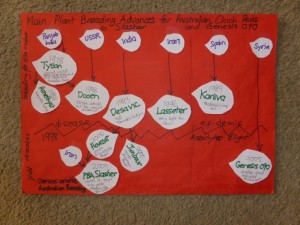
red lentils – Nugget and Flash 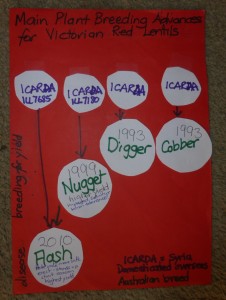
Sweet Australian Lupins – Mandelup 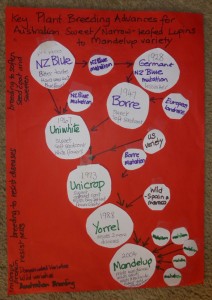
Oil-seeds
For more on these crops go to the Crops page
page last updated 4/8/2014

